Browse in the Library:
| Artist or Composer / Score name | Cover | List of Contents |
|---|---|---|
| All Sondheim Vol IV Music and lyrics |
 |
All Sondheim Vol IV Music and lyrics |
| All That Jazz piano-vocal Arrangement |
 |
|
| All The Things You Are (Guitar And Tabs) | All The Things You Are (Guitar And Tabs) | |
| All The Things You Are (Guitar And Tabs) (Musescore File).mscz | ||
| All The Things You Are By Jerome Kern Guitar Transcription |
 |
|
| All The Things You Are Jerome Kern Oscar Hammerstein 2nd 1940 Jazz Standard (Vintage sheet music) |
 |
|
| All Time Standards (Songbook) Jazz Guitar Tablature Chord Melody Solos (Jeff Arnold) |
 |
All Time Standards (Songbook) Jazz Guitar Tablature Chord Melody Solos (Jeff Arnold) |
| All Time Standards Piano (Arr. Gabriel Bock) |
 |
All Time Standards Piano (Arr. Gabriel Bock) |
| All You Need Is Ears George Martin with Jeremy Hornsby 1979 (Book) The story o the recording genius who created The Beatles |
 |
|
| Allan Holdsworth Just for the curious book Guitar with Tablature |
 |
|
| Allan Holdsworth Melody Chords For Guitar |
 |
|
| Allan Holdsworth Super Guitarist with TABs |
 |
Allan Holdsworth Super Guitarist with TABs |
| Alle prese con una verde Milonga (Paolo Conte) | ||
| Allevi, Giovanni – Back To Life |
 |
|
| Allie Wrubel – Gone with the Wind |
 |
|
| Allman Brothers Guitar Songbook |
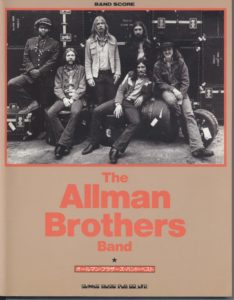 |
Allman Brothers Guitar Songbook |
| Allman Brothers, Best Of The (Piano, Vocal, Guitar) |
 |
Allman Brothers, Best Of The (Piano, Vocal, Guitar) |
| Allman Brothers, The – The Definitive Collection For Guitar Vol 1 with Tablature |
 |
Allman Brothers, The – The Definitive Collection For Guitar Vol 1 |
| Alma Redemptoris Mater |
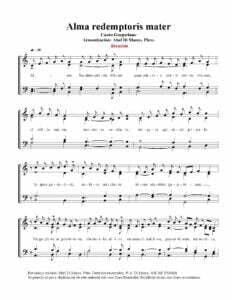 |
|
| Almeno tu nell’universo (Mia Martini) | ||
| Almir Chediak Ivan Lins Guitar Songbook Vol 2 |
 |
Ivan Lins Guitar Songbook Vol 1 by Almir Chediak |
| Alok – Hear Me Now Sheet Music |
 |
|
| Alone together (Howard Dietz & Arthur Schwartz) | Alone together (Howard Dietz Arthur SchwArtz) | |
| Alone Together (Musescore File).mscz | ||
| Alone Togheter Guitar Solo Transcription Jazz Standard |
 |
|
| Alphaville Forever Young (piano & Guitar) |
 |
Alphaville Forever Young (piano & Guitar) |
| Also Sprach Zarathustra Op. 30 – Richard Strauss (Musescore File).mscz | ||
| Alternative Rock Sheet Music Collection |
 |
Alternative Rock Sheet Music Collection |
| Always on my mind – Elvis Presley – easy arrangement for piano, with fingering |
 |
|
| Amadeus – W.A. Mozart (film score arr. for piano solo by D. Fox) |
 |
Amadeus – W.A.Mozart |
| Amadeus (original soundtrack piano solo arrangements) |
 |
Amadeus (Film score book) Piano Solos |
| Amalia Rodriguez FADOS Melodias De Sempre (GUITAR) |
 |
Amalia Rodriguez FADOS Melodias De Sempre (GUITAR) |
| Amando amando (Renato Zero) | ||
| Amar Pelos Dois (Salvador Sobral) | ||
| Amarcord (Nino Rota) | ||
| Amazing Grace – Tradicional (Piano ) |
 |
|
| Amazing Grace Traditional (Jazzy ver. sheet music) |
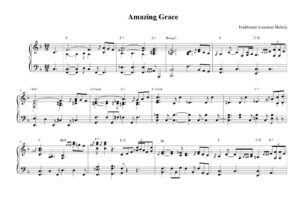 |
|
| Amazing Phrasing – Guitar 50 Ways to Improve Your Improvisational Skills (Guitar TABs Amazing Phrasing) (Tom Kolb) |
 |
Amazing Phrasing – Guitar 50 Ways to Improve Your Improvisational Skills (Guitar TABs Amazing Phrasing) (Tom Kolb) |
| Amelie Poulain – 6 pieces for piano – Yann Tiersen – Yann Tiersen |
 |
 |
| America (My Country ‘Tis of Thee Easy Piano Level 2 |
 |
|
| America Greatest Hits Piano Vocal Guitar chords |
 |
America Greatest Hits Piano Vocal Guitar chords |
| America Greatest Hits (piano & Guitar) |
 |
America greatest |
| America Horse With No Name Piano vocal | America Horse With No Name Piano vocal | |
| America’s Songs The Stories Behind The Songs Of Broadway, Hollywood, And Tin Pan Alley (Philip Furia, Michael Lasser) Book |
 |
|
| American Folk Songs For Guitar with Tablature |
 |
American Folk songs |
| American Folk Songs, My First Book of – Bergerac |
 |
|
| American Indian Melodies A. Farwell Op.11 (1901) |
 |
American Indian Melodies A. Farwell Op.11-min |
| American Pie (sheet music) |
 |
|
| American Popular Music (Book) by Larry Starr and Christopher Waterman |
 |
|
| Americana – Alegre, Magín (Guitarra) | Americana – Alegre, Magín (Guitarra) | |
| Amici Miei (Carlo Rustichelli) | ||
| Amor mio (Battisti) | ||
| Amore bello (Claudio Baglioni) | ||
| Amy Beach – Op.15 Four Sketches in Autumn |
 |
|
| Amy Grant – Breath Of Heaven | ||
| Amy MacDonald This Is The Life |
 |
AMY MACDONLAD |
| Amy Winehouse – Valerie |
 |
|
| Amy Winehouse – Valerie (sheet music) |
 |
|
| Amy Winehouse Amy Amy Amy |
 |
|
| Amy Winehouse Back To Black Songbook |
 |
Amy Winehouse Back To Black Songbook |
| Amy Winehouse Frank Songbook |
 |
Amy Winehouse Frank |
| Amy Winehouse I Heard Love Is Blind |
 |
|
| Amy Winehouse Just Friends |
 |
|
| Amy Winehouse Rehab |
 |
|
| Amy Winehouse You Know Im No Good |
 |
|
| An affair to remember (Harry Warren) | ||
| An American In Paris An George Gershwin (Concert Band)An American In Paris An George Gershwin (Concert Band) Arr. by Naohiro Iwai |
 |
|
| An American Tail – The Marketplace – James Horner | ||
| An Introduction To Bach Studies (eBook) |
 |
|
| An Irish Blessing (Musescore File).mscz | ||
| An Irish Blessing (SATB) Choral | An Irish Blessing (SATB) | |
| Analisis musical claves para entender e interpretar la Música (M. y A. Lorenzo) Español |
 |
|
| Analysis Of Tonal Music An Schenkerian Approach Allen Cadwallader and David Gagné (Book) |
 |
|
| Analyzing Bach Cantatas by Eric Chafe (eBook) |
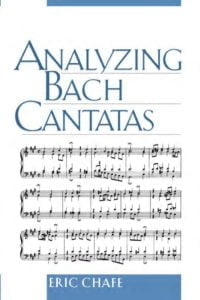 |
|
| Analyzing Schubert by Suzannah Clark (Cambridge Un. Press) (eBook) |
 |
|
| Anastacia Not That Kind Songbook |
 |
Anastacia songbook |
| Anastasia Once Upon A December arr. by John Brimhall (Piano Solo 2 Versions Easy And Intermediate) |
 |
|
| Anastasia Sheet Music songbook Piano & vocal |
 |
Anastasia Sheet Music songbook Piano & vocal |
| Ancora ancora ancora (Mina) | ||
| Ancora qui (Django Unchained) Elisa – Ennio Morricone | ||
| And the Waltz goes on (Anthony Hopkins) | ||
| Andante (from String Quartet op. 22) P. I. Tchaikovsky | ||
| Anderson Freire – So Voce Piano |
 |
|
| Andras Schiff – Music Comes Out Of Silence Book |
 |
|
| Andre Gagnon – L’air Du Soir |
 |
|
| Andre Gagnon – Le Reve De L’automne (sheet music Collection) |
 |
Andre Gagnon – Le Reve De L’automne (sheet music Collection) |
| Andre Gagnon – Les Jours Tranquilles | Andre Gagnon – Les Jours Tranquilles | |
| Andre Gagnon – Meguriai |
 |
|
| Andre Gagnon – Nelligan |
 |
|
| Andre Gagnon – Petite Nostalgie |
 |
|
| Andre Gagnon – Reves D’Automne | Andre Gagnon – Reves D’Automne | |
| Andre Gagnon – The Very Best Of Andre Gagnon (Sheet Music Songbook) |
 |
Andre Gagnon – The Very Best Of Andre Gagnon (Sheet Music Songbook) |
| Andre Gagnon Ciel D’Hiver |
 |
|
| Andre Gagnon Entre Le Boeuf et l’Ane Gris Musique Traditionelle |
 |
|
| André Gagnon L’air Du Soir |
 |
|
| Andre Gagnon Neiges |
 |
|
| André Gagnon Nelligan |
 |
|
| André Gagnon Origami |
 |
|
| André Gagnon Pensées Fugitives |
 |
|
| Andre Gagnon Pensées Fugitives |
 |
|
| André Gagnon Piano Solitude |
 |
Gagnon, André Piano Solitude |
| Andre Gagnon Prologue |
 |
|
| André Gagnon Selection Speciale de chansons (partitions musicales) |
 |
André Gagnon Selection Speciale de chansons (partitions musicales) |
| André Gagnon Un Piano Sur La Mer (Piano Solo Partition Sheet Music) | Gagnon André Un Piano Sur La Mer (Piano Solo Partition Sheet Music) | |
| Andre Popp Paul Mauriat Love Is Blue Piano Solo Arr. |
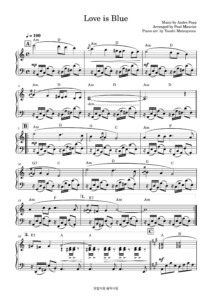 |
|
| André Previn – Play Like André Previn no. 1 |
 |
Andre Previn sheet music |
| Andre Previn – The Genius of (Piano Solos sheet music) |
 |
The genius of André Previn |
| Andre Rieu La Vie Est Belle (Songbook Collection As Performed By André Rieu) |
 |
Andre Rieu La Vie Est Belle (Songbook Collection As Performed By André Rieu) |
| Andrea Bocceli – Time To Say Goodbye | ||
| Andrea Boccelli – Time To Say Goodbye |
 |
|
| Andrea Bocelli Romanza songbook (Guitar & Voice) |
 |
Andrea Bocelli Romanza songbook |
| Andrea Bocelli – Anthology (songbook) |
 |
 |
| Andrea Bocelli – Con te partiro (Time to say Goodbye) Piano Solo arr | Andrea Bocelli – Con te partiro (Time to say Goodbye) Piano Solo | |
| Andrea Bocelli – Con te partiro (Time to say Goodbye) Piano Solo.mscz | ||
| Andrea Bocelli – The Best Of Songbook |
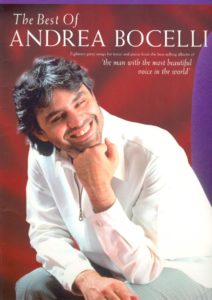 |
Andrea Bocelli best of |
| Andrea Bocelli Celine Dion The Prayer Easy Piano And Vocal By David Foster, Carole Bayer Sager, Alberto Testa And Tony Renis |
 |
|
| Andrea Bocelli Celine Dion – The Prayer – Easy Piano and Vocal by David Foster, Carole Bayer Sager, Alberto Testa and Tony Renis.mscz | ||
| Andrea Bocelli Cieli Di Toscana (Piano, guitar & Vocal) |
 |
Andrea Bocelli Cieli Di Toscana |
| Andrea Bocelli Sogno Songbook |
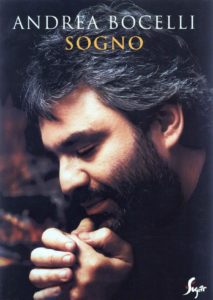 |
Andrea Bocelli sogno |
| Andrea Bocelli The Prayer |
 |
Waltz from the balet ‘Coppelia’ (Easy piano) – Leo Delibes (Partition, sheet music)

Leo Delibes
Clément Philibert Léo Delibes (Saint-Germain-du-Val, today a neighborhood of La Flèche, in the Sarthe department, February 21, 1836 – Paris, January 16, 1891) was a French romantic composer, best known for his ballets Sylvia and Coppélia and, more recently, for his opera Lakmé.
He was the son of a professional postman-died prematurely. His mother was a talented music aficionado, and his maternal grandfather was an opera singer. After the early death of his father, he was raised mostly by his mother and his uncle. In 1871, at age 35, he married Leontine Estelle Denainekin. Delibes died 20 years later in 1891, and was buried in the Montmartre Cemetery, Paris. His nephew Frédéric was the paternal grandfather of the Spanish writer Miguel Delibes.
Delibes began his composition studies at the Paris Conservatoire in 1847, where he won a first prize in music theory in 1850. He was a student of Adolphe Adam. A year later, he also took voice lessons, although he ended up being a better organist than singer. He rose through the ranks as accompanist pianist and choirmaster at the Théâtre Lyrique, second chorusmaster at the Paris Opera (1864), and organist at the Saint-Pierre-de-Chaillot between 1865 and 1871. The first of his several operettas was Deux le sous charbon, composed in 1856 for the Folies-Nouvelles.
Delibes achieved real fame in 1870 with the success of his ballet Coppélia. It premiered at the Paris Opera. It is based on a story by the German writer Ernst Theodor Amadeus Hoffmann. It tells the fate of old Dr Coppelius and his doll Coppélia, who comes to life. It is often performed as a concert suite.
Among his other ballets are Sylvia, written with Léon Minkus and published in 1876; its action takes place in Greece. The ‘Pizzicato’ of this ballet stands out, one of Delibes’ greatest successes. A great lover of dance, Tchaikovsky admired both ballets.
Delibes also composed several operas, the last of which, the exuberant and orientalizing Lakmé, premiered at the Opéra-Comique in 1883. It chronicles the impossible love of a British officer and the daughter of a Brahma priest, in 18th century India. XIX. It contains, among many dazzling numbers, the famous showpiece number for coloratura soprano known as the Scène et légende de la fille du paria, called the Air des clochettes (Aria of the Little Bells): ‘Où va la jeune Indoue?’. The duet Sous le dôme épais, called the Duet of Flowers, is equally famous; it is a barcarolle made familiar to the general public by British Airways commercials.
In their day, his operas impressed Tchaikovsky enough for him to consider Delibes ‘much better than Brahms’, which is not very complimentary, considering that the Russian composer considered Brahms ‘a talentless bastard.’
In 1867 Delibes composed the Divertissement Le Jardin Animé for the recovery of the ballet Le Corsaire by Joseph Mazilier and Adolphe Adam; he wrote a mass, a cantata on the subject of the Algerians; and he composed operettas and occasional music for the theater, such as dances and ancient airs for Victor Hugo’s Le roi s’amuse (The King Amuses) (1882), the play that Verdi turned into Rigoletto.
Some musicologists believe that Charles Gounod’s ballet Faust was actually composed by him. His songs Bonjour, Suzon! and Les Filles du Cadix (The Women of Cádiz).
In 1884, Delibes was elected to the Academy.
Delibes is remembered as a master of the light and melodious French musical tradition, as he himself proclaims: «For my part, I recognize that Wagner makes me feel very lively emotions, he provokes me with enthusiasm. But, if as a listener, I feel a deep admiration for the German maestro, I refuse, as a producer, to imitate him.»
He died leaving an unfinished opera, Kassya, which was orchestrated by Jules Massenet, allowing it to be premiered in 1893.
Delibes’s work stands out for having been a great influence on composers such as Tchaikovsky, Saint-Saëns and Debussy.
Best Sheet Music download from our Library.
Coppélia
Coppélia is a sentimental and comic ballet, in three acts, with original choreography by Arthur Saint-Léon to a ballet libretto by Saint-Léon and Charles Nuitter and music by Léo Delibes. It is based on a macabre story by E. T. A. Hoffmann entitled Der Sandmann (The Sandman), published in 1815. The ballet premiered on May 25, 1870 at the Paris Opera, with Giuseppina Bozzachi in the title role.
Its early successes were interrupted by the Franco-Prussian War and the siege of Paris, but it eventually went on to become the most frequently performed ballet at the Opéra Garnier.
The team formed by Saint-Léon and Nuittier had already achieved previous success with the ballet La Source (1860), in which Delibes had contributed a part of the music. The story is about a mysterious and pale inventor, Doctor Coppélius, who has a life-size dancing doll. It seems so realistic that Franz, a villager falls in love with her, leaving aside her true love, Swanilde, who in Act II shows him her madness, by dressing as a doll and pretending to come to life.
The festive divertissements for the wedding day in the streets of the town that occupy Act III are often eliminated in the modern danced versions, considering that one of the entrées has the first czardas presented in a ballet. If Mary Shelley’s Frankenstein represents the dark side of the scientist-as-life-giver theme, then Coppelia is the light side. If Giselle is a tragedy that takes place in a peasant village, then Coppélia is a comedy on the same stage. Franz’s part was danced in drag, a convention that appealed to the male members of the Jockey Club de Paris and was held in Paris until World War II.
Giuseppina Bozzacchi, the original Coppélia, a young ballet student who had just turned sixteen, was expected to have a great career ahead of her but fell ill with cholera during the siege of Paris and died on her seventeenth birthday.
Some influence on this story comes from the traveling shows of the late 18th century and early 19th century, which featured mechanical automata. This area of entertainment has been poorly documented, but recent history in this field is contained in Tom Standage’s The Mechanical Turk (2002). These shows later influenced Charles Babbage when he invented the difference engine.
Please, subscribe to our Library.
If you are already a subscriber, please, check our NEW SCORES’ page every month for new sheet music. THANK YOU!
